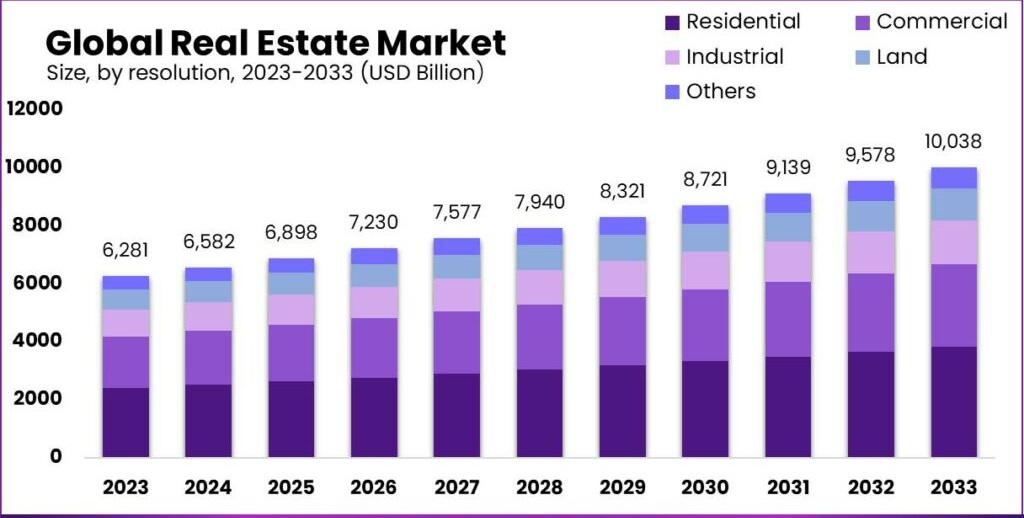The real estate development market is a vibrant and ever-evolving landscape where opportunities abound, but so do challenges. With rapid urbanization, changing demographics, and fluctuating economic conditions, staying ahead of the competition requires more than just traditional approaches. Developers must navigate a maze of trends and demands influencing buyer behavior while continuously adapting to new strategies.
As investors seek lucrative returns, understanding what it takes to thrive in this dynamic environment has never been more crucial. Are you ready to explore practical strategies that can elevate your real estate development game? Let’s dive into the essentials for success in today’s competitive market.
Understanding Current Market Trends and Demands
The real estate development landscape is constantly evolving. Keeping an eye on current market trends is essential for success.
Urbanization continues to shape demand. More people are flocking to cities, driving the need for residential and commercial properties in metropolitan areas.
Sustainability has also become a priority. Developers are embracing eco-friendly practices and green building materials, and buyers increasingly favor energy-efficient homes that minimize environmental impact.
Technology also plays a crucial role in shaping consumer preferences. Smart home features attract tech-savvy buyers looking for convenience and modern living experiences.
Demographics matter significantly. The growing influence of millennials and Gen Z means developers must cater to their unique lifestyles and housing needs, from affordable options to co-living spaces designed for collaboration and community engagement. Understanding these dynamics helps inform strategic decisions in real estate development projects.

Innovative Marketing and Branding Strategies
In the fast-evolving world of real estate development, standing out is essential. Innovative marketing strategies can significantly improve visibility and engagement.
Utilizing social media platforms effectively allows developers to showcase properties through stunning visuals and engaging storytelling. Virtual tours and drone footage enhance the online experience, drawing potential buyers into immersive environments.
Branding plays a crucial role as well. A strong brand identity creates trust and recognition among clients. Developments should focus on unique selling propositions that highlight their distinctiveness from competitors.
Content marketing is another powerful tool. Blogs, podcasts, and webinars provide valuable insights while establishing authority in the industry. Educational content can attract prospective investors who are seeking informed decisions.
Embracing technology like AI for personalized communication can elevate customer experiences significantly. Tailored messages resonate better with audiences, fostering loyalty over time.
Leveraging Networking and Relationships
Building a robust network is crucial in real estate development. Relationships can open doors to new opportunities, partnerships, and resources.
Engaging with local businesses, investors, and community leader’s fosters trust. These connections often lead to collaborative projects that benefit all parties involved.
Attending industry events and conferences expands your reach. Sharing insights and experiences creates lasting bonds that can prove invaluable over time.
Social media platforms also play a significant role. They allow developers to showcase their work while connecting globally with potential clients or collaborators.
Remember to underestimate the power of mentorship, too. Learning from seasoned professionals accelerates growth and provides unique perspectives on navigating market challenges.
Every interaction matters; each conversation could pave the way for future success in real estate development.
The Importance of Data Analysis and Forecasting
Data analysis and forecasting are critical components in real estate development. With rapid changes in market conditions, having a firm grasp on data can provide a competitive edge.
Understanding trends allows developers to anticipate shifts in demand. This insight is invaluable for making informed investment decisions.
Utilizing advanced analytics tools helps identify patterns related to buyer preferences and pricing strategies. These insights guide project planning more effectively than intuition alone.
Forecasting future market conditions based on reliable data enables developers to allocate resources wisely. It reduces risks associated with overbuilding or misjudging market appetite.
Moreover, incorporating predictive modeling into a strategy can enhance project feasibility assessments. By analyzing economic indicators, demographic shifts, and local infrastructure developments, developers position themselves for success.
In today’s fast-paced environment, relying solely on experience isn’t enough; data-driven approaches allow for more intelligent decision-making in real estate development ventures.

Global Real Estate Market Size Forecast 2023-2033 by resolution
The global real estate market size forecast for 2023-2033 reveals intriguing dynamics across various sectors, with residential, commercial, industrial, land, and other categories poised to shape the landscape of property investments.
As urbanization continues to surge worldwide, the residential sector is expected to see significant growth driven by rising demand for housing solutions that cater to a diverse demographic portfolio.
Meanwhile, the commercial real estate segment is adapting to evolving work environments post-pandemic; flexible office spaces and mixed-use developments are rising as businesses redefine their spatial needs.
The industrial sector remains robust, buoyed by an expanding e-commerce industry demanding warehouses and logistics hubs in strategic locations. The land market sees varied trends influenced by zoning regulations and sustainable development initiatives as investors look closer at raw land opportunities for future projects.
In addition, “others” encapsulates niche markets such as hospitality and healthcare properties that are gaining traction amidst changing consumer behaviors and preferences in specialized services. This intricate interplay among different segments suggests a vibrant tapestry of opportunities that can reshape investment strategies over this decade-long horizon.
Conclusion: Thriving in the Competitive Real Estate Development Market
Thriving in today’s competitive real estate development market requires a multifaceted approach. Staying updated on current trends and demands is essential, as they can shift rapidly. Developers can create projects that resonate with the target audience by understanding what buyers want.
Innovative marketing strategies play a crucial role in standing out from competitors. Effectively utilizing digital platforms can enhance visibility and engagement with potential clients. Branding should reflect the unique qualities of your developments while also appealing to contemporary aesthetics and values.
Building solid networks is equally important. Relationships within the industry often lead to collaboration opportunities, access to resources, and valuable insights that can’t be found elsewhere. Attending events or joining professional groups can open doors you didn’t even know existed.
Data analysis has become indispensable in making informed decisions about future projects. Forecasting market trends enables developers to anticipate demand shifts before they occur, ensuring their investments are sound.
Adapting these strategies will keep you afloat and allow you to thrive amidst competition in the ever-evolving landscape of real estate development. Embracing change and being proactive will set successful developers apart as leaders in this dynamic field.




